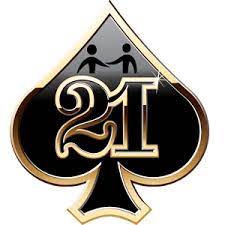다양한 바카라사이트 보너스 종류 알아보기
바카라사이트 보너스란? 바카라사이트 보너스는 온라인 카지노에서 제공하는 혜택 중 하나로, 새로 가입한 회원이나 기존 회원들에게 주는 보너스 혜택을 말합니다. 보너스의 종류에는 다양한 것들이 있으며, 각각의 특징과 이용 방법을 잘 숙지하고 활용하는 것이 중요합니다. 주요 바카라사이트 보너스 종류 1. 입금 보너스 입금 보너스는 새로운 회원이 최초로 입금을 할 때 제공되는 혜택으로,...

바카라사이트 보너스란? 바카라사이트 보너스는 온라인 카지노에서 제공하는 혜택 중 하나로, 새로 가입한 회원이나 기존 회원들에게 주는 보너스 혜택을 말합니다. 보너스의 종류에는 다양한 것들이 있으며, 각각의 특징과 이용 방법을 잘 숙지하고 활용하는 것이 중요합니다. 주요 바카라사이트 보너스 종류 1. 입금 보너스 입금 보너스는 새로운 회원이 최초로 입금을 할 때 제공되는 혜택으로,...
카지노사이트는 현대인들 사이에서 인기를 끌고 있는 온라인 카지노 게임 플랫폼입니다. 최근 몇 년간 온라인 카지노사이트 카지노 산업은 빠르게 성장하고 있으며, 수많은 사람들이 간편하고 편리하게 카지노 게임을 즐길 수 있도록 해주고 있습니다. 온라인 카지노사이트를 이용하면 가정에서 편안하게 카지노 게임을 즐길 수 있습니다. 바쁜 일상 속에서 스트레스를 풀고 싶을 때 언제든지 접속해서...
고소득 알바 찾기의 시작 고소득 알바를 찾는 것은 많은 이들에게 있어 꿈같은 목표입니다. 그러나 그것을 실현하기 위해서는 노력과 계획이 필수적입니다. 고소득 알바 성공 사례를 살펴보면, 대부분의 사람들이 자신의 열정과 노력으로 성공을 이루었다는 것을 알 수 있습니다. 열정과 노력의 결합 고소득 알바를 하는 사람들 중 대다수는 자신의 열정을 통해 성공을 거둘...
에볼루션카지노 소개 에볼루션카지노는 실제 카지노에서 진행되는 게임들을 온라인으로 즐길 수 있는 플랫폼으로, 최고의 화질과 안정성으로 유명합니다. 이곳에서는 다양한 게임을 플레이할 수 있으며, 입금과 출금도 간편하게 할 수 있습니다. 안전한 입금 방법 에볼루션카지노에서는 다양한 결제 수단을 통해 입금을 할 수 있습니다. 신용카드, 은행 송금, 전자지갑 등 여러 옵션이 제공되며, 모든 결제는...
알파벳의 매력과 카지노친구 플랫폼 소개 알파벳은 온라인 카지노와 관련된 키워드 중 하나로, 그 매력은 다양한 이벤트와 보너스를 제공하는 데 있습니다. 이러한 매력적인 기능을 즐기기 위해 카지노친구 플랫폼은 최적의 선택 중 하나입니다. 카지노친구는 안전하고 신뢰할 뿐만 아니라, 다양한 알파벳 관련 이벤트와 프로모션을 제공하여 플레이어들에게 흥미진진한 경험을 선사합니다. 이용방법과 가입절차 카지노친구 플랫폼을...
스웨디시 마사지란? 스웨디시 마사지는 스웨덴의 전통적인 마사지 기술로, 피로를 풀어주고 근육의 긴장을 완화하는데 도움을 줍니다. 이 마사지 방법은 부드럽고 순환적인 움직임으로 몸의 균형을 맞추는 것에 중점을 둡니다. 마사지의 기본 원칙 연습을 통한 숙련도 향상 스웨디시 마사지를 제대로 하기 위해서는 연습이 필수입니다. 자신만의 독특한 스타일을 개발하기 위해 많은 시간을 투자하며 자신감을...
우리카지노는 온라인 카지노의 새로운 지평을 열어주는 플랫폼으로, 2024년 3월에 출시되어 많은 이용자들로부터 추천받고 있습니다. 이곳에서는 다양한 카지노 게임을 즐길 수 있을 뿐만 아니라 안전하고 편리한 서비스도 경험할 수 있습니다. 2024년 3월에 오픈된 우리카지노는 다양한 게임 선택지를 제공하며 플레이어들로부터 높은 리뷰를 받고 있습니다. 블랙잭, 슬롯머신, 포커 등 다양한 게임을 즐기면서 즐거운...
카지노사이트에서 즐기는 게임은 현대인들에게 큰 인기를 끌고 있습니다. 이제 온라인으로 언제 어디서나 카지노 게임을 즐길 수 있다는 사실이 많은 이용자들을 사로잡고 있죠. 게다가, 쿠폰, 이벤트, 프로모션,보증 등 다양한 혜택을 누릴 수 있는 것도 카지노사이트만의 장점 중 하나입니다. 카지노사이트에서 제공되는 다양한 게임은 모든 이용자들에게 적합한 선택지를 제공합니다. 각종 카드게임부터 슬롯머신까지, 다양한...
연체자대출의 정의와 중요성 연체자대출은 금융기관으로부터 정상적인 대출 승인이 어려운 개인에게 제공되는 특수한 대출 상품입니다. 이러한 대출은 일반적인 금융 상품과 달리 높은 이자율과 엄격한 상환 조건을 가집니다. 그러나 이지론 플랫폼은 연체자들에게 최적화된 대출 옵션을 비교하고 분석하여, 각 개인의 상황에 맞는 가장 합리적인 대출 방안을 제공합니다. 이는 개인의 재정적 부담을 줄이고, 신속한...
온라인카지노는 현재 많은 이들 사이에서 인기를 끌고 있는 온라인 게임 중 하나입니다. 실제 카지노와 비슷한 분위기를 느낄 수 있으면서도 편안하게 집에서 즐길 수 있는 장점 때문에 많은 이용자들이 이용하고 있습니다. 본문을 통해 온라인카지노에 대해 자세히 알아보겠습니다. 온라인카지노란 무엇인가요? 온라인카지노는 인터넷을 통해 운영되는 카지노로, 다양한 카드 게임이나 슬롯 머신 등을 온라인으로...
여자알바의 현실과 기회 오늘날 여성 구직자들은 다양한 업종에서 근무 기회를 찾고 있습니다. 특히, 여성 친화적인 직장 환경을 찾는 것은 매우 중요한 과제가 되었습니다. 이지알바는 여성 구직자들에게 맞춤형 일자리를 제공하며, 여성들이 직업 세계에서 자신의 역량을 발휘할 수 있도록 지원합니다. 여성들이 직면하는 다양한 취업 장벽을 넘어서도록 돕는 이지알바는 여성 구직자들에게 필수적인 리소스가...
바카라사이트를 찾고 계신다면, 당신에게 카지노친구가 제공하는 최상의 서비스를 소개합니다. 카지노친구는 최고의 바카라 게임을 제공하며, 안전한 환경에서 진정한 카지노 경험을 느낄 수 있도록 최선을 다하고 있습니다. 우리와 함께 하시면 언제 어디서나 최고의 카지노 게임을 즐길 수 있습니다. 왜 카지노친구를 선택해야 하는가? 카지노친구는 다양한 바카라 게임을 제공하며, 다양한 이벤트와 혜택을 통해 고객들에게...
안전놀이터란? 안전놀이터는 온라인에서 안전하게 놀 수 있는 사이트를 말합니다. 이제 인터넷 시대에 접어들면서 다양한 온라인 게임 및 베팅 사이트가 등장했지만, 그 중에서도 안전놀이터(verify-365.com)를 찾는 것은 매우 중요합니다. 안전놀이터를 통해 안전하고 신뢰할 수 있는 게임과 베팅을 즐길 수 있습니다. 이박사와 함께하는 안전놀이터 이박사는 신뢰할 수 있는 전문가들이 모인 플랫폼으로, 안전놀이터를 소개하고...
이제 막 직업을 찾기 시작한 당신, 혹은 새로운 경력을 모색하는 여러분에게 ‘선수알바’는 꿈을 현실로 만드는 최적의 플랫폼입니다. 이곳에서는 지역별, 업종별, 급여별로 맞춤형 일자리 정보를 제공하며, 각각의 고용 조건에 맞는 최적의 직업을 찾을 수 있도록 돕습니다. 선수알바는 단순한 일자리 정보 제공을 넘어, 커뮤니티를 통한 정보 공유와 경험담으로 여러분의 취업 준비를 더욱...
안녕하세요, 카지노사이트에 관심있는 여러분들을 위해 온카 플랫폼을 소개합니다. 온카 플랫폼은 카지노사이트 추천 및 보증 업체로서 최고의 서비스와 안전한 환경을 제공합니다. 온카 – 빅데이터 기반 카지노사이트 순위 온카는 빅데이터를 활용하여 다양한 카지노사이트를 분석하고 순위를 매기는 서비스입니다. 수많은 데이터를 분석하여 신뢰성과 안전성 있는 카지노사이트를 추천해드립니다. 이를 통해 사용자들은 신뢰할 수 있는 카지노사이트를...